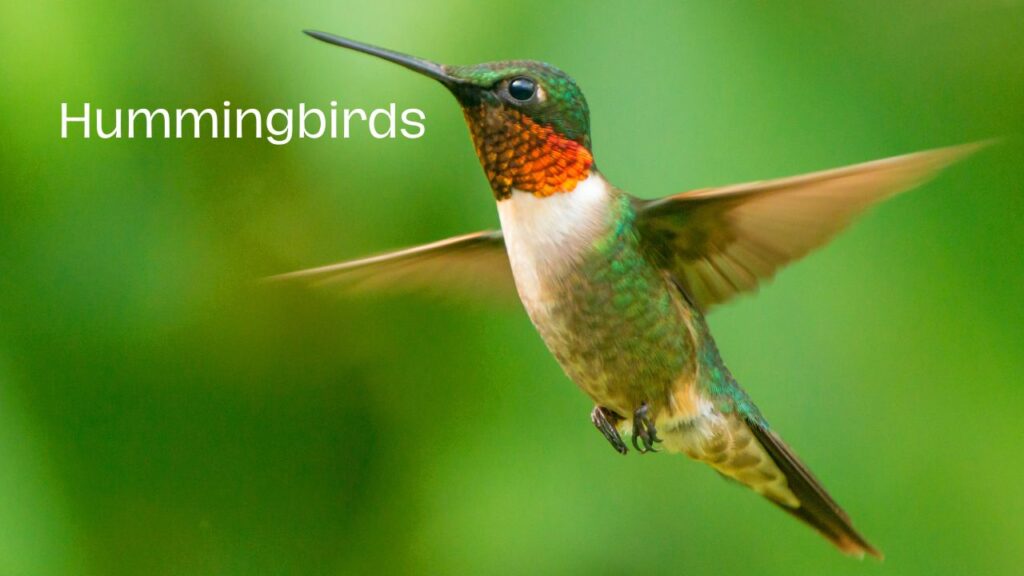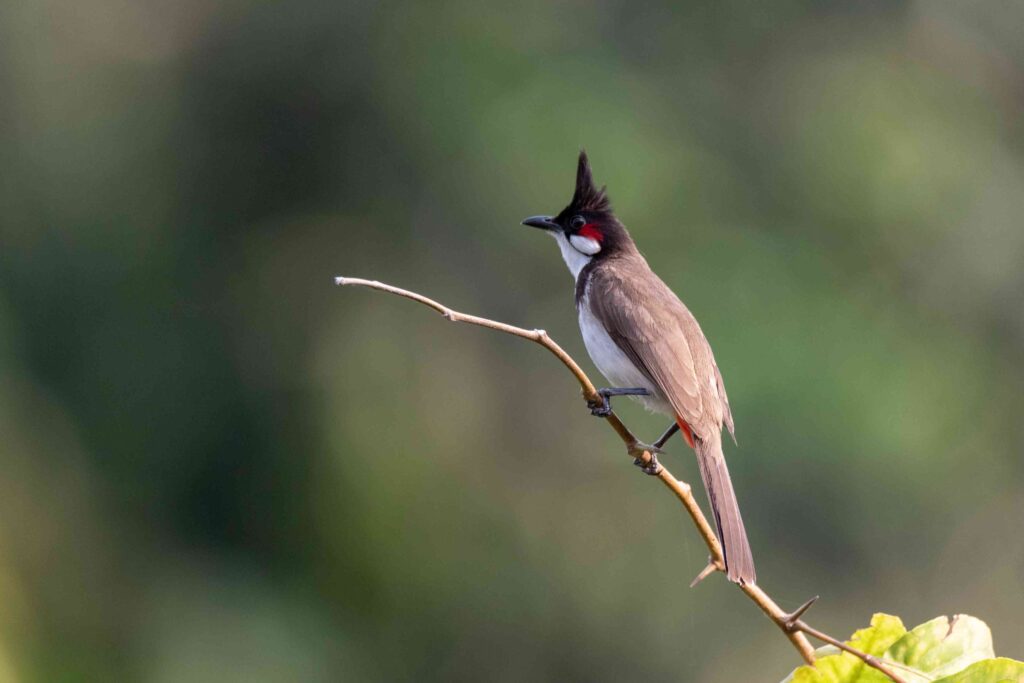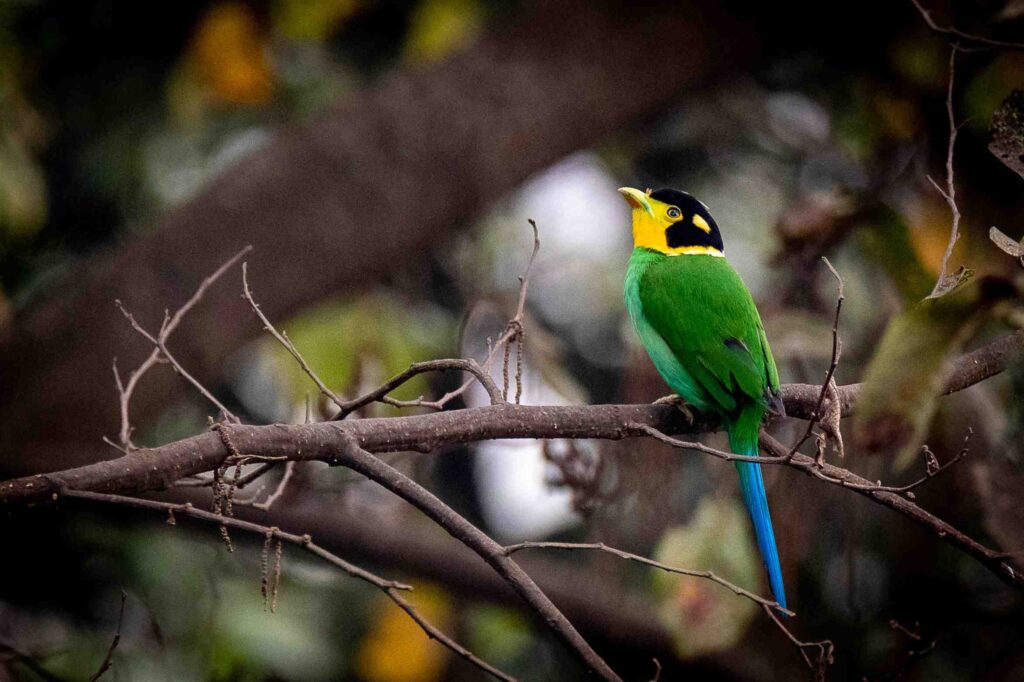In the world of birds, few capture our hearts and imagination quite like hummingbirds. These enchanting creatures are known for their iridescent colors, astonishing agility, and remarkable behaviors. From their unique diet to their migratory patterns, let’s dive into the captivating world of hummingbirds and uncover some of their intriguing secrets.

A Gourmet Diet: What Do Hummingbirds Eat?
Hummingbirds have a specialized diet that sets them apart from many other birds. These pint-sized aviators are nectarivores, relying primarily on the nectar of flowers as their main source of sustenance. To meet their high energy demands, hummingbirds must feed frequently, visiting hundreds of flowers each day. Their long bills and specialized tongues allow them to extract nectar from the deep crevices of flowers.
In addition to nectar, hummingbirds also consume insects and spiders for protein and essential nutrients. These insects provide the necessary sustenance for their metabolically active lifestyles, aiding in their growth, reproduction, and overall well-being.
A Brief Yet Spectacular Life: How Long Do Hummingbirds Live?
Despite their delicate appearance, hummingbirds are surprisingly resilient and can live relatively long lives for their size. On average, their lifespans range from 3 to 5 years in the wild. However, some hummingbirds have been known to survive for up to a decade, provided they can avoid predators, diseases, and other environmental threats.
Nature’s Colorful Attraction: Plants that Attract Hummingbirds
To attract these tiny wonders to your garden, consider planting a variety of nectar-rich flowers. Hummingbirds are drawn to vibrant and tubular flowers, such as trumpet vine, fuchsia, salvia, bee balm, and petunias. These flowers not only provide sustenance but also add a splash of color and beauty to any landscape.
Migratory Mysteries: Where Do Hummingbirds Go in the Winter?
As the chill of winter approaches, many hummingbird species embark on an awe-inspiring journey known as migration. While some tropical species are year-round residents, many North American hummingbirds migrate to warmer regions in Central and South America to escape the harsh winter conditions. These migrations can span thousands of miles, showcasing their impressive endurance and navigational skills.
Nesting Nooks: Where Do Hummingbirds Nest?
Hummingbirds are meticulous nest builders, crafting intricate structures to protect their delicate eggs and hatchlings. Their nests are often constructed on branches, ledges, or even clotheslines. They use spider silk, plant down, and other soft materials to create sturdy yet flexible nests that expand as their chicks grow. These nests provide a safe haven for the young hummingbirds until they are ready to fledge.
Symbolism and Cultural Significance: What Do Hummingbirds Symbolize?
Across cultures, hummingbirds have held symbolic significance. In many indigenous beliefs, they are seen as symbols of love, joy, and vitality. Their rapid wing beats are associated with the concept of achieving the impossible, reminding us of the potential to overcome challenges with determination and resilience.
Habitat Harmony: Where Do Hummingbirds Live?
Hummingbirds can be found throughout the Americas, from Alaska to Tierra del Fuego. Their habitats vary widely, from lush rainforests to arid deserts. Their adaptability to different environments is a testament to their survival skills and resourcefulness.
Speed Demons of the Sky: How Fast Do Hummingbirds Fly?
Hummingbirds are renowned for their incredible agility and speed. They are capable of hovering in mid-air by flapping their wings up to 80 times per second. During forward flight, they can reach speeds of up to 30 miles per hour, making them one of the fastest creatures in the avian world.
Conclusion
Hummingbirds are truly extraordinary creatures, blending grace, beauty, and remarkable behaviors into their small frames. From their specialized diet to their captivating migrations, these tiny aviators remind us of the intricate wonders that nature has to offer. As we watch them dart and dance among the flowers, let’s take a moment to appreciate the enchanting world of hummingbirds that graces our lives.
Frequently Asked Questions About Hummingbirds
1. What do hummingbirds eat?
Hummingbirds primarily feed on flower nectar, which provides them with the energy they need for their high metabolism. They use their specialized tongues to extract nectar from flowers. In addition to nectar, they also consume insects and spiders for protein and essential nutrients.
2. How long do hummingbirds live?
In the wild, the average lifespan of a hummingbird ranges from 3 to 5 years. However, some individuals can live up to a decade if they avoid threats like predators, diseases, and harsh weather conditions.
3. What are some plants that attract hummingbirds?
Hummingbirds are attracted to brightly colored, tubular flowers with abundant nectar. Some popular plants that attract hummingbirds include trumpet vine, fuchsia, salvia, bee balm, petunias, and columbine.
4. Where do hummingbirds go in the winter?
Many North American hummingbird species migrate to warmer regions in Central and South America to escape the cold winter months. Some tropical hummingbird species, however, remain in their habitats year-round.
5. Where do hummingbirds nest?
Hummingbirds build their nests in various locations, often attaching them to branches, ledges, or even human-made structures like clotheslines. Their nests are constructed using materials like spider silk, plant down, and feathers, providing a safe place for their eggs and chicks.
6. What do hummingbirds symbolize?
In various cultures, hummingbirds symbolize different concepts such as love, joy, resilience, and even achieving the impossible. Their rapid wing movements and vibrant colors make them a potent symbol of life’s beauty and the pursuit of happiness.
7. Where do hummingbirds live?
Hummingbirds are found throughout the Americas, from Alaska down to Tierra del Fuego. Their habitats range from diverse environments like rainforests, mountains, and deserts, showcasing their adaptability to different conditions.
8. How fast do hummingbirds fly?
Hummingbirds are incredibly agile and fast flyers. They can hover in mid-air by flapping their wings up to 80 times per second. During forward flight, they can reach speeds of up to 30 miles per hour.
9. How do hummingbirds find their food?
Hummingbirds have excellent vision and can perceive a wide spectrum of colors, including ultraviolet light. They are attracted to the bright colors of flowers, especially reds and oranges, which signify a high nectar content. They also rely on their memory and spatial awareness to remember the locations of feeding sites.
10. How can I attract hummingbirds to my garden?
To attract hummingbirds to your garden, plant a variety of nectar-rich flowers with different bloom times. Provide a water source like a shallow birdbath, and avoid using pesticides to ensure a healthy environment for these delicate creatures.
11. Do hummingbirds make any sounds?
Yes, hummingbirds can produce sounds, although they are often quite soft. They make chirping and buzzing sounds during courtship displays and aggressive interactions with other hummingbirds.
12. Are hummingbirds endangered?
While hummingbirds are not generally considered endangered as a group, some species are facing threats due to habitat loss, climate change, and other environmental factors. Conservation efforts are crucial to ensuring their continued survival.
13. How do hummingbirds mate?
Hummingbird courtship involves elaborate aerial displays by the male to attract a female. The male will perform acrobatic flights and show off his colorful plumage. If the female is receptive, she will join in the display, and mating occurs in mid-air. After mating, the male has no involvement in raising the chicks.
14. How do hummingbirds avoid predators?
Hummingbirds are incredibly agile and have the ability to change direction rapidly, making them difficult targets for predators. They also have keen eyesight and can detect potential threats from a distance. Choosing safe nesting locations and being vigilant are crucial strategies for avoiding predators.
15. Can hummingbirds walk or hop on the ground?
Hummingbirds are not well-equipped for walking or hopping on the ground. Their legs and feet are adapted for perching rather than walking. They use their feet primarily for scratching and preening.
16. Do hummingbirds migrate in flocks?
While hummingbirds are generally solitary birds, they may migrate in loose groups during the migratory season. However, they do not form large flocks like some other bird species.
17. Can I feed hummingbirds with a sugar solution?
Yes, you can create a sugar solution similar to flower nectar by mixing one part white granulated sugar with four parts water. Avoid using honey, as it can promote bacterial growth. Ensure that feeders are cleaned regularly to prevent mold and contamination.
18. How do hummingbirds navigate during migration?
Hummingbirds have an incredible sense of direction and can navigate using landmarks, the position of the sun, and even Earth’s magnetic field. They might also have an innate ability to detect atmospheric pressure changes that indicate changes in elevation.
19. What are some common hummingbird predators?
Common predators of hummingbirds include larger birds like hawks and jays, as well as domestic cats and praying mantises. Spiders can also capture hummingbirds caught in their webs.
20. Can I keep a hummingbird as a pet?
It is not recommended to keep hummingbirds as pets. They have specialized dietary and environmental needs that are challenging to replicate in captivity. It’s best to enjoy their beauty in the wild or by attracting them to your garden with appropriate feeders and flowers.



